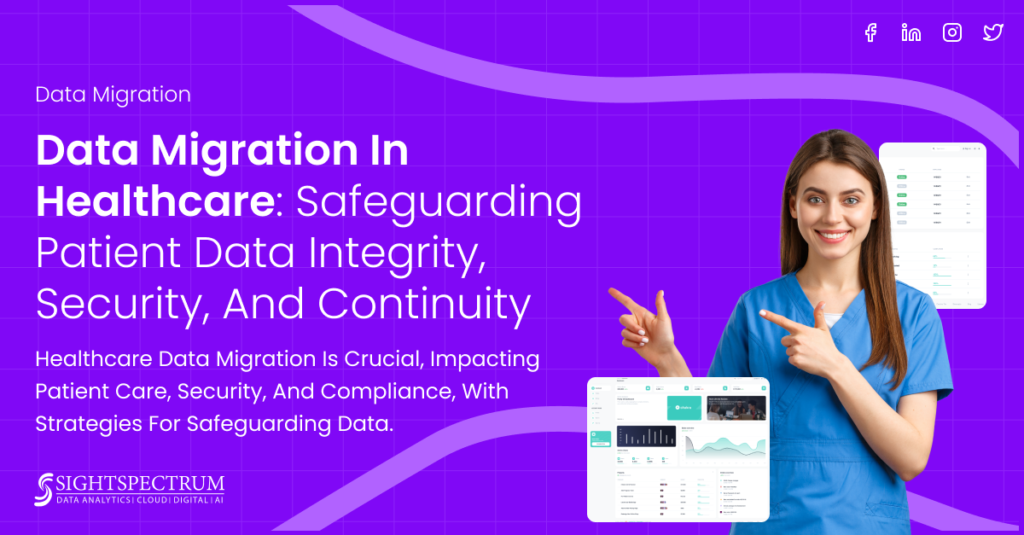Introduction: Data migration in healthcare systems is a vital process that directly impacts patient care, clinical operations, and regulatory compliance. Ensuring the integrity, security, and continuity of patient data during migration is of utmost importance to maintain accurate medical records and uphold patient trust. In this article, we will delve into the critical nature of data migration in healthcare and discuss strategies to safeguard patient data throughout the migration process.

1. Patient Data Integrity:
- Accurate Data Mapping: Thoroughly map source and target data elements, including patient demographics, medical histories, test results, and treatment plans.
- Data Validation: Implement data validation and cleansing processes to identify and rectify inconsistencies or errors before migration.
- Validation Testing: Conduct validation testing to ensure the accuracy of migrated patient data, preventing data loss or corruption.
2. Security and Compliance:
- Data Encryption: Encrypt patient data both at rest and during transit to protect sensitive information from unauthorized access.
- Access Controls: Implement strict role-based access controls to limit data access to authorized personnel only.
- HIPAA Compliance: Ensure that data migration adheres to Health Insurance Portability and Accountability Act (HIPAA) regulations for patient data privacy and security.
3. Continuity of Care:
- Uninterrupted Access: Plan for minimal disruption to patient care by ensuring that healthcare providers can access patient records seamlessly during and after migration.
- Data Availability: Confirm that patient data is accessible and accurate immediately after migration to maintain uninterrupted care.
4. Data Transformation and Standardization:
- Code Set Mapping: Accurately map medical code sets (e.g., ICD-10, CPT) to ensure consistent coding and billing after migration.
- Data Standardization: Standardize data formats, units, and terminologies to enable interoperability between different healthcare systems.
5. Backup and Disaster Recovery:
- Data Backups: Create secure and up-to-date backups of patient data before migration to ensure data recovery in case of unforeseen issues.
- Disaster Recovery Plan: Develop a comprehensive disaster recovery plan that includes steps to restore patient data in the event of a migration-related failure.
6. User Training and Change Management:
- Staff Training: Train healthcare professionals on the new system to ensure accurate data entry, retrieval, and utilization.
- Change Communication: Effectively communicate the migration process and potential changes to staff, patients, and stakeholders to manage expectations.
7. Data Auditing and Monitoring:
- Audit Trails: Implement audit trails to track all actions related to patient data during the migration process, aiding accountability and security.
- Real-time Monitoring: Continuously monitor data migration and access to quickly identify and address any security breaches or anomalies.
8. Vendor and Third-Party Security:
- Vendor Assessment: Thoroughly assess the security measures and compliance practices of third-party vendors involved in the migration.
- Secure Contracts: Ensure that contracts with vendors explicitly outline security responsibilities and compliance obligations.
Conclusion: Safeguarding Patient Data Integrity in Healthcare Data Migration
Data migration in healthcare systems demands meticulous planning, a deep commitment to patient data integrity, and rigorous adherence to security and compliance standards. By implementing encryption, access controls, validation processes, and disaster recovery plans, healthcare organizations can ensure the seamless transition of patient data while maintaining security, continuity of care, and regulatory compliance. Ultimately, these measures contribute to better patient outcomes and the preservation of trust in healthcare systems.